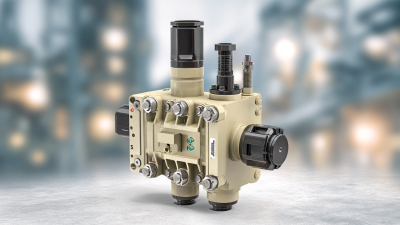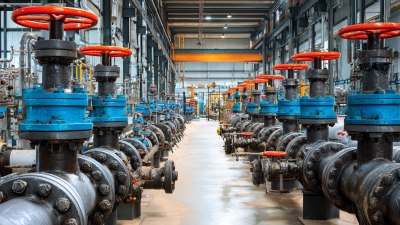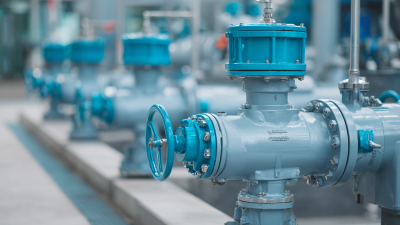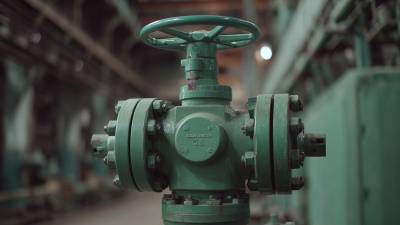In the ever-evolving landscape of industrial valve technology, wafer valves have emerged as pivotal components in various applications, offering both versatility and efficiency. According to a report by MarketsandMarkets, the global industrial valve market is projected to reach USD 92.9 billion by 2025, with wafer valves playing a significant role in this growth due to their compact design and low installation costs. Wafer valves, designed to fit between the flanges of piping systems, not only minimize space requirements but also ensure reduced weight without compromising performance. Their unique characteristics make them ideal for use in critical sectors such as water treatment, chemical processing, and oil and gas, where reliability and precision are paramount. Understanding the advantages and applications of different wafer valve types is essential for engineers and procurement professionals aiming to optimize system performance and longevity in their respective industries.

 Wafer valves are an essential component in various fluid control applications, and understanding their types, advantages, and uses is crucial for engineers and technicians. The most common wafer valve types include the butterfly valve, check valve, and gate valve, each designed to operate under specific conditions and for distinct purposes.
Butterfly valves, for instance, are favored for their lightweight structure and efficiency in regulating flow, making them popular in both industrial and commercial settings. Their simple design allows for quick operations, contributing to their widespread adoption in large pipeline systems.
Wafer valves are an essential component in various fluid control applications, and understanding their types, advantages, and uses is crucial for engineers and technicians. The most common wafer valve types include the butterfly valve, check valve, and gate valve, each designed to operate under specific conditions and for distinct purposes.
Butterfly valves, for instance, are favored for their lightweight structure and efficiency in regulating flow, making them popular in both industrial and commercial settings. Their simple design allows for quick operations, contributing to their widespread adoption in large pipeline systems.
In addition to their functionality, wafer valves offer several advantages, such as reduced installation space and cost-effectiveness compared to traditional valves. They are particularly beneficial in scenarios where space is limited and quick action is necessary.
Check valves play a vital role in preventing backflow in piping systems, ensuring the unidirectional flow of fluids. The versatility of wafer valves makes them suitable for a wide range of applications, from water treatment facilities to chemical processing plants. Understanding the characteristics and operational efficiencies of various wafer valve types allows industries to select the most appropriate device for their specific needs.
Wafer valves have gained popularity in various industrial applications due to their unique design and operational advantages. One of the key benefits of wafer valves is their compact size and lightweight structure, which allows for easy installation in tight spaces. This is particularly advantageous in systems where weight and space constraints are critical, such as in HVAC systems, water treatment plants, and chemical processing facilities. Their design ensures a tight seal when closed, reducing the risk of leaks and improving the overall efficiency of fluid transport systems.

Another significant advantage of wafer valves is their cost-effectiveness. Their simpler design results in lower manufacturing and maintenance costs, making them an attractive option for companies looking to optimize expenses without sacrificing quality. Moreover, wafer valves can handle a wide range of fluids, including corrosive mediums, thanks to the variety of materials available for construction. This versatility allows industries to implement wafer valves across different applications, from food and beverage processing to oil and gas operations, enhancing operational reliability while maintaining safety standards.
Wafer valves are increasingly popular in various industrial applications due to their compact design and efficiency. According to the Global Valve Market report, wafer valves account for approximately 25% of the total valve market, highlighting their important role in sectors such as water treatment, oil and gas, and power generation. In water treatment plants, wafer valves are often used for isolation and throttling, effectively controlling the flow and minimizing the risk of leaks due to their low profile and lightweight design.
In the oil and gas industry, wafer valves are critical for maintaining safety and efficiency. The 2022 Oil and Gas Industry Report indicates that the use of wafer valves can enhance pipeline integrity by reducing pressure loss and ensuring tighter sealing compared to traditional valve types. This performance is particularly crucial in high-pressure environments, as even minor leaks can lead to significant environmental and economic consequences. The compact nature of wafer valves also allows for easier installation in confined spaces, making them a preferred choice for many pipeline configurations.
When selecting the right wafer valve for your needs, it’s essential to first understand the specific requirements of your application. Wafer valves come in various types, including butterfly, gate, and check valves, each designed for different operational contexts. Considerations such as pressure, flow rate, and the type of media being controlled are critical in making an informed choice. For instance, butterfly valves are often favored for their compact design and versatility, whereas gate valves are preferred for on-off applications where minimal pressure drop is important.
In addition to the technical specifications, it’s crucial to think about installation and maintenance factors. Wafer valves are typically installed between flanges, making them a space-saving solution for tight spaces. Evaluating compatibility with existing systems and ease of access for future maintenance can save time and resources in the long run. Choose a valve that not only meets your operational demands but also aligns with your long-term maintenance strategy to ensure optimal performance in your system.
When it comes to maximizing the performance of wafer valves, proper maintenance practices are crucial. According to a report by the International Journal of Industrial Valve Technology, regular inspection and maintenance can enhance the lifespan of valve components by up to 30%. This involves routine checks on sealing surfaces and the functionality of the valve mechanism, as any wear or damage can lead to inefficiencies or potential leaks within the system.
Furthermore, lubrication is a key aspect of wafer valve maintenance. The American Society of Mechanical Engineers (ASME) recommends specific lubricants for different valve applications to reduce friction and wear. Utilizing the right lubricant can increase operational efficiency by minimizing energy loss in automated systems.
Keeping the valve clean from debris and ensuring that any actuators are functioning properly plays a significant role in preventing unplanned downtime, which can cost industries thousands of dollars each year. By adhering to these maintenance tips, operators can ensure that their wafer valves consistently perform at their best, prolonging their operational life and reliability in critical applications.





